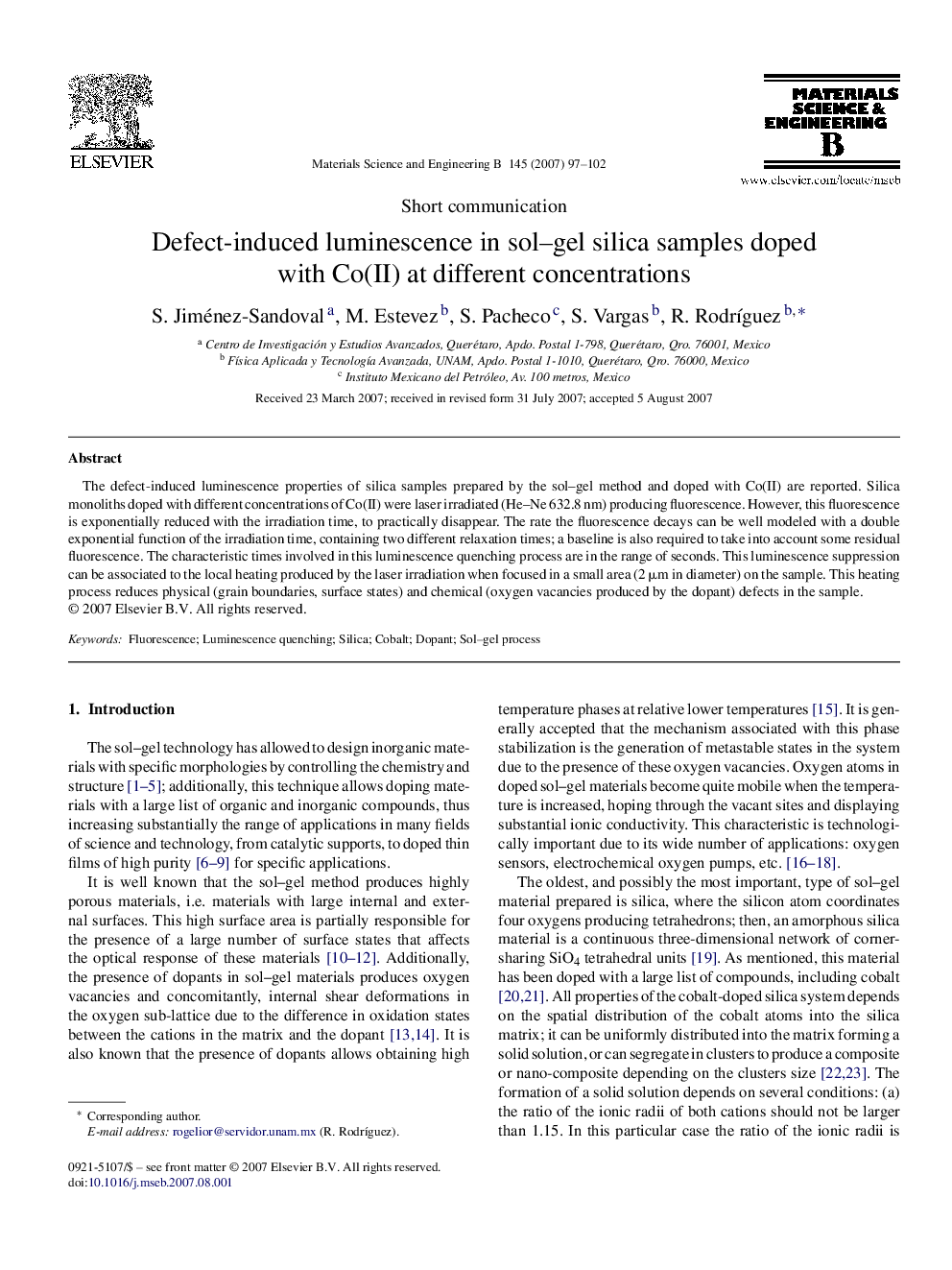| Article ID | Journal | Published Year | Pages | File Type |
|---|---|---|---|---|
| 1531254 | Materials Science and Engineering: B | 2007 | 6 Pages |
Abstract
The defect-induced luminescence properties of silica samples prepared by the sol-gel method and doped with Co(II) are reported. Silica monoliths doped with different concentrations of Co(II) were laser irradiated (He-Ne 632.8 nm) producing fluorescence. However, this fluorescence is exponentially reduced with the irradiation time, to practically disappear. The rate the fluorescence decays can be well modeled with a double exponential function of the irradiation time, containing two different relaxation times; a baseline is also required to take into account some residual fluorescence. The characteristic times involved in this luminescence quenching process are in the range of seconds. This luminescence suppression can be associated to the local heating produced by the laser irradiation when focused in a small area (2 μm in diameter) on the sample. This heating process reduces physical (grain boundaries, surface states) and chemical (oxygen vacancies produced by the dopant) defects in the sample.
Related Topics
Physical Sciences and Engineering
Materials Science
Electronic, Optical and Magnetic Materials
Authors
S. Jiménez-Sandoval, M. Estevez, S. Pacheco, S. Vargas, R. RodrÃguez,
